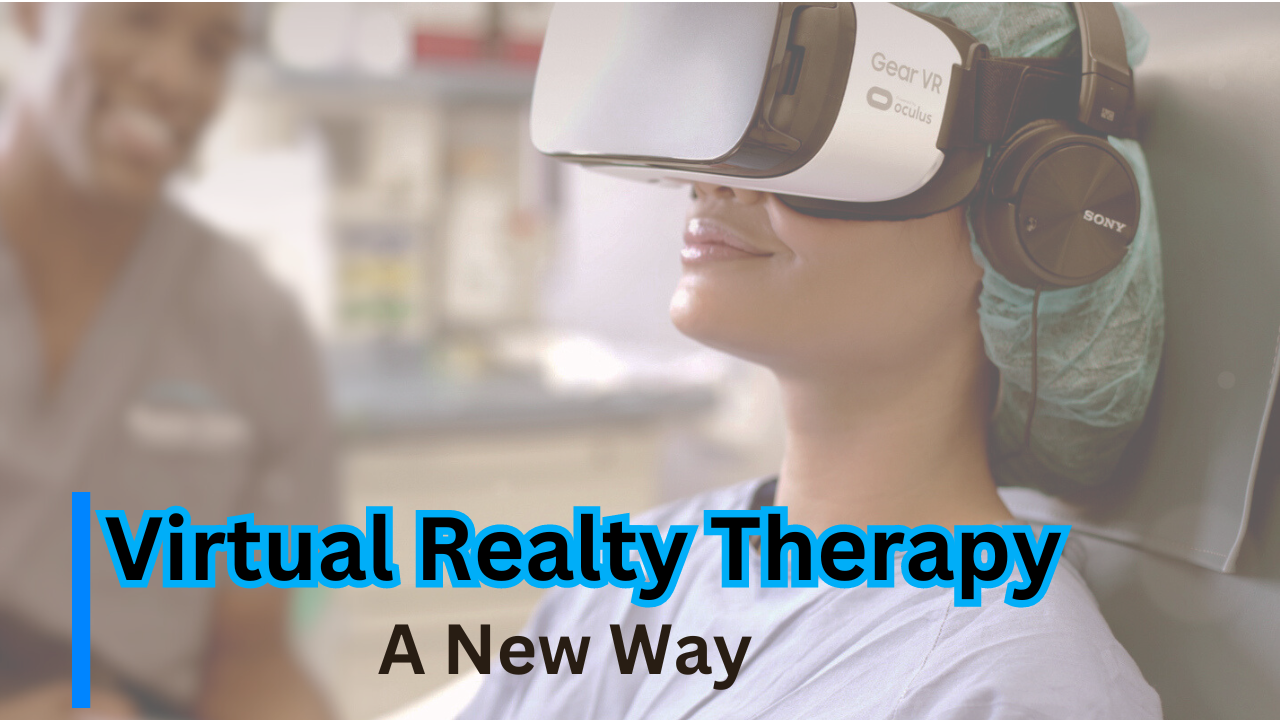Going through mental health problems, why not go to a physiatrist? Physically going there sometimes can be hard and not an efficient way as well, so why not try Virtual Therapy? Yes, it’s possible now, this isn’t a science fiction movie it is the exciting world of Virtual Reality Therapy. As technology gets better, Virtual Reality Therapy is becoming a new and promising way to help people who are going through mental health issues. In this article, we will look at how VRT is changing our lives and helping us to cope with our mental health issues better.
What is Virtual Reality Therapy?
Virtual Reality Therapy Uses computer-generated environments for therapy sessions. Instead of just talking to a physiatrist physically they can put on a headset sit in their comfort zone and interact with them, it’s an easy way to treat the problem without involving yourself in a hassle. These settings can be anything from relaxing nature scenes to situations that help humans securely face their fears.
How Does VRT Work?
Facing Fears:
Through the help of VRT people can face their fears with ease and more fiercely, because they are not physically in that scene, they are interacting in a virtual world and through that therapist helps people who are going through anxiety, phobias, and post-traumatic stress disorder (PTSD). If someone is afraid of heights, they can experience increasing heights in the virtual world, helping them feel less scared over time.
Helping You Manage Your Thoughts:
VRT additionally works properly with cognitive behavioral therapy (CBT). Virtual scenarios can create social conditions, hard events, or memories, allowing patients to exercise new approaches to thinking and coping in real time.
Easing Pain:
VRT can help with pain control too. By immersing patients in soothing virtual environments, VRT can distract the brain and reduce the sensation of pain. This is especially beneficial in places like burn units and for the duration of physical therapy, providing pain relief without relying heavily on medication.
Benefits of Virtual Reality Therapy:
Helping ease pain with less need for medication:
Physical therapy can be boring, because you sit in one place for hours and just talk, while on VRT you can immerse yourself in a virtual world where you can see different scenarios that keep patients interested and motivated, helping ease pain with less need for medication.
A Comfortable, Safe Space:
VRT provides a controlled environment where patients can face their fears without real-world dangers. This safety allows in step by step reducing anxiety.
Therapy Made Just for You:
Virtual environments may be customized for every patient. Therapists can make scenarios just for patients to immerse themselves so they can be free and express their feelings without feeling bored. Therapy made just for you.
The Future of Virtual Reality Therapy:
As the VRT technology improves, its use in mental health treatment will grow. Researchers are searching into how VRT can help with despair, eating problems, and addictions. Future advancements might include artificial intelligence, making VRT even more effective with real-time adjustments during sessions.
More Accessible:
One exciting opportunity is that VRT may want to make mental health treatment more accessible and less expensive. With greater VR headsets and software programs becoming available, patients may soon be capable of getting therapy at home, saving time and money.
Conclusion:
Virtual Reality Therapy is an exciting new way to treat mental health. It combines advanced technology with proven methods to make mental health care more effective and accessible. Discover how this innovative approach can offer new hope and healing in mental health treatment. The future is here, and it’s virtual.
FAQs:
1. What is Virtual Reality Therapy (VRT) and how does it work?
Virtual Reality Therapy (VRT) involves using computer-generated environments for therapy sessions. Patients wear a VR headset and interact with virtual scenarios designed to address their mental health issues, such as anxiety, phobias, or PTSD. The virtual settings allow individuals to confront their fears and manage their thoughts in a controlled and immersive way.
2. How can Virtual Reality Therapy help with mental health issues like anxiety or PTSD?
VRT helps individuals face their fears in a virtual world, which can be less intimidating than real-life situations. By gradually exposing patients to virtual scenarios that simulate their fears, VRT can reduce anxiety and phobias over time. It also supports cognitive behavioral therapy (CBT) by creating scenarios that allow patients to practice new coping strategies in real-time.
3. What are the benefits of using Virtual Reality Therapy over traditional therapy methods?
VRT offers several benefits including providing a comfortable and safe space for patients to face their fears without real-world risks. It can also ease pain by distracting the brain with soothing virtual environments, potentially reducing the need for medication. Additionally, VRT can be customized for individual needs, making therapy more engaging and effective.
4. How does Virtual Reality Therapy contribute to pain management?
VRT can aid in pain management by immersing patients in calming virtual environments, which can help distract them from pain. This method is particularly useful in settings like burn units or during physical therapy, where reducing the sensation of pain without relying heavily on medication is beneficial.
5. What does the future hold for Virtual Reality Therapy? The future of VRT looks promising with ongoing advancements in technology. Researchers are exploring its potential to address conditions such as depression, eating disorders, and addictions. Future developments may include the integration of artificial intelligence to enhance the effectiveness of VRT with real-time adjustments during therapy sessions, and making mental health treatment more accessible and affordable.
